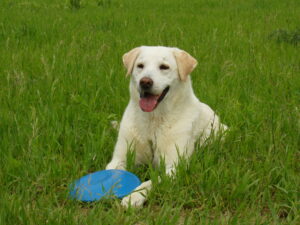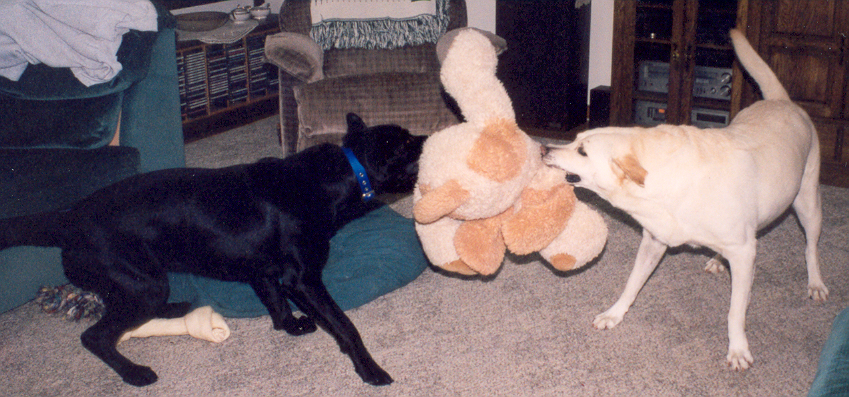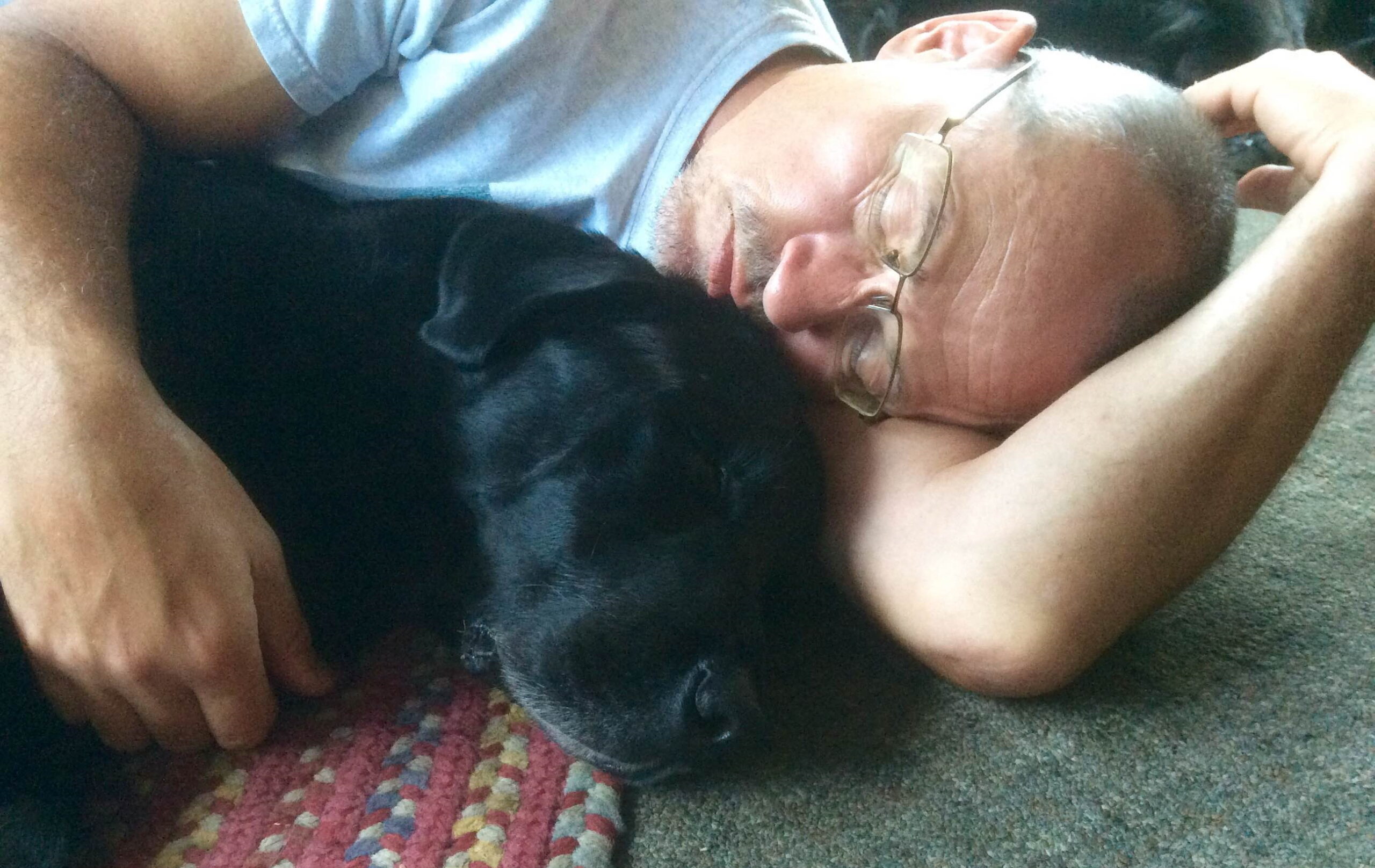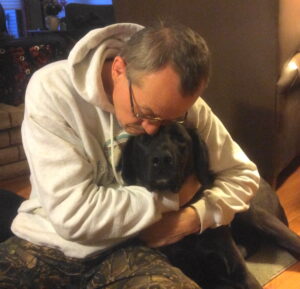Barks Blog
Dog Adoption, Done Right

Dog adoption is near and dear to my heart, and one which, hopefully, leads to a celebration that lasts for the life of the pet. The main concern I have heard people express is that adopting a dog is likely to result in dealing with “issues” such as fear, aggression or separation anxiety. I often hear the person express a desire to buy a puppy in order to begin with a clean slate and avoid pre-existing “issues”.
I appreciate that not everyone is suitable to adopting a pet with pre-existing “issues” and yet I think of folks I have known who got their “clean slate” puppy from a breeder…and then made a mess of it. Raising a puppy is a Herculean task. My wife and I got a wonderful puppy from a friend in 1983, before I knew anything about dogs. Doh! Then I bought the best-selling dog training book of the day and it was filled with recommendations to use aversive methods, which I dutifully did. Doh!
It was by good fortune or the grace of the Canine Gods that my puppy and I made it through the Scylla and Charybdis of puppyhood together, mostly due to my own ignorance. Samantha was simply being a puppy, and I played the part of an uninformed dog lover who bit off more than he could chew. Had I been less committed to Samantha then perhaps she would have ended up in the local humane society, an adolescent dog with “issues.”
Raising a puppy is a monumental undertaking, even for a professional. Mere mortals, like myself in 1983, barely stood a chance. Puppies require endless patience, a good sense of humor, and a high pain threshold. Ooh, those puppy teeth are sharp!
My wife and I adopted the next four dogs in our life, at ages between 16-24 months. They were beyond the puppy years and their personalities were pretty well formed. What we saw was what we got, and so we were better prepared.
The first dog bone of advice I offer is to enter the adoption process with eyes wide open, prepared for the undertaking of bringing another living being into your lifestyle. Preparing in advance is key.
Charlie was our first adopted dog. We learned that Charlie’s owners were divorcing. The wife wanted nothing to do with Charlie; the husband loved his dog but could not keep him. Charlie was left in limbo. Charlie had no “issues” and only needed a home. He bonded with us immediately and required no socialization, training or behavior modification. He was the mythical “perfect dog” that comes once in a lifetime.
When Charlie was 10 years old and slowing down a bit we went to the local humane society looking for a young Labrador as a companion for us, and a buddy for Charlie.
Jake was about 16 months old. His original family got him as a puppy, from a breeder. They wanted a hunting dog but did not train him or kennel him. Jake barked a lot and ran off the property seeking enrichment.

He was caught by animal control and taken to the humane society. The family had to pay $70 to get him back. When he ran off again and was returned to the humane society the family did not bother to reclaim him. Jake spent six months in the confinement of the shelter and definitely had “issues” when we met him, including thunderstorm phobia.
My wife and I adopted Jake and committed ourselves to his welfare for the rest of his life. At times I thought that would be a short commitment. Jake was the sort of dog who watched snowmobiles race past our countryside property on the trail at 60 MPH, and gave chase…for one-quarter mile. He was a dog who blindly walked in front of my pick-up truck when I approached the garage, and (twice) crossed in front of our horse as she passed through a gate, getting knocked across the ground like a fumbled football as she crossed his path. He was also a dog who greedily gobbled horse poop at her hind feet in the stall, when she kicked him in the head.
That was an expensive trip to the emergency care veterinary clinic. I thought the Fates had determined Jake should die young, and yet our “crazy” Lab lived happily to 15 years and nine months. The “issues” he had were worth the many years of joy and playfulness we shared together.
Flashback…when Jake was 10 years old we sought a companion for him and adopted Buddha, at about 16 months of age. We were told that Buddha had separation anxiety and neither of us even knew what that was.

I later learned it was a rather significant behavioral “issue”. Soon after adoption Buddha was struck by a car and nearly died, requiring almost $3,000 in surgical repairs. We paid the bill, not knowing if he would survive the procedure.
Buddha went on to fully recover from his injuries and conquer his separation anxiety. He also became a registered Pet Partners therapy dog. The formerly panic-stricken dog with “issues” became a lighthouse of stress relief for countless people in his therapy dog career, and an important helper with me when I worked with dogs whose “issue” was dog-dog reactivity.
About a year or so after we adopted Buddha, we brought Gandhi into our home. He was a big lanky Lab who was found as a stray during one severely cold winter. Gandhi had worms and his ribs were showing. He was starving to death.

We adopted Gandhi on December 25th, gave him his new name and resolved his separation anxiety and resource guarding. He also became a registered therapy dog and a helper in my dog training and behavior consulting business.
Adoption can be a good option, especially when it is done thoughtfully.
A recent client of mine contacted me a month before adopting a dog that they found in a rescue. I trained a previously adopted dog for the family and knew they were a wonderful family, totally committed to the welfare of their pets.
I conducted a pre-adoption home inspection on behalf of the rescue organization. Then I gave the family a copy of “Love Has No Age Limit” written by Dr. Patricia B. McConnell and Dr. Karen B. London. They wrote the book to guide families through the adoption process.
The family bought all the necessary supplies and equipment for their dog and agreed upon the family rules so there would be consistency. Then they called me back to begin working with their new family member, coaching family on the training exercises.
We also addressed specific issues such as how their new dog was interacting with the family cats. Each week when I returned for another session the family had a prepared list of goals to work on, and so we kept their dog on track.
By the end of the process every family member was wearing a dog treat pouch, was coaching one another on proper methods and timing, and supported one another as they worked with their dog. They were a fully functioning family in every sense of the word. It was the most satisfying experience I have had in several years, and a great illustration of adoption done right.
I do not suggest that either buying a dog from a breeder or adopting a dog is the better choice. What I suggest is planning ahead and preparing your home so that you and your new family member are set up for success. It certainly has worked in my family.

